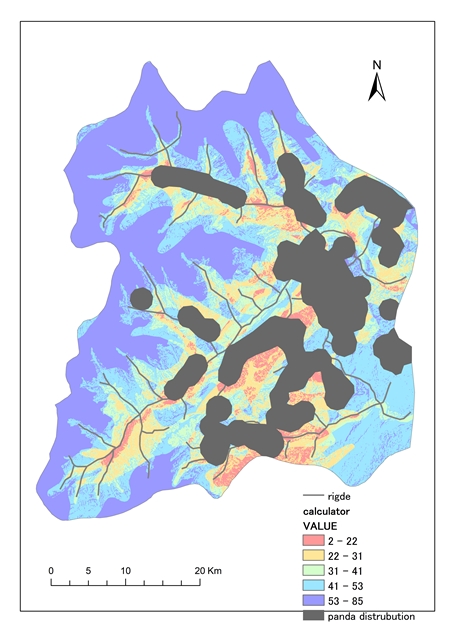Abstract
1.Introduction
The giant panda is one of the most endangered mammals in the world. Its distribution has spread throughout the eastern and southern parts of China. In the past 200 years, climate change and deforestation makes this phenomenon of habitat fragmentation extremely serious. The number of giant panda has declined greatly and the distribution range is gradually reduced. The existing giant pandas exist only in a few isolated populations. The article will do some research on the habitat suitability and fragmentation of pandas in the Wolong nature reserve.
2.Research Objective
Based on the characteristics of natural environment and human environment, this paper briefly assesses the habitat status in Wolong Giant Panda Nature Reserve. By combination with the distribution of giant pandas, the aim is to briefly figure out the habitat requirements of giant pandas, and to provide a scientific basis for conservation and restoration of habitats for giant pandas.
3.Method
The research method of this paper is to divide each factor into several grades according to the living habit of giant pandas, assign the corresponding value to each level from high to low, and then add up the resistance values of the seven influencing factors, so as to classify the habitat of giant panda in Wolong. The greater the total resistance value, the less suitable for the survival of giant pandas; on the contrary, the smaller the total resistance, the more favorable the survival of the giant panda. Finally, the distribution of the giant pandas is combined to verify the analysis results.
4.Result
The lower value R is,the more suitable for giant pandas to survive. When we combine the final evaluation resulting chart with the actual distribution map of wild pandas, We can see that activity areas for wild giant pandas in the Wolong nature reserve are more in ditches, mountainside depressions, valley terraces and other areas, usually in the gentle slope less than 20 degrees. These places are with lush forests, well growing bamboo, relatively stable temperature, well hidden condition, rich food resources and headwater.



